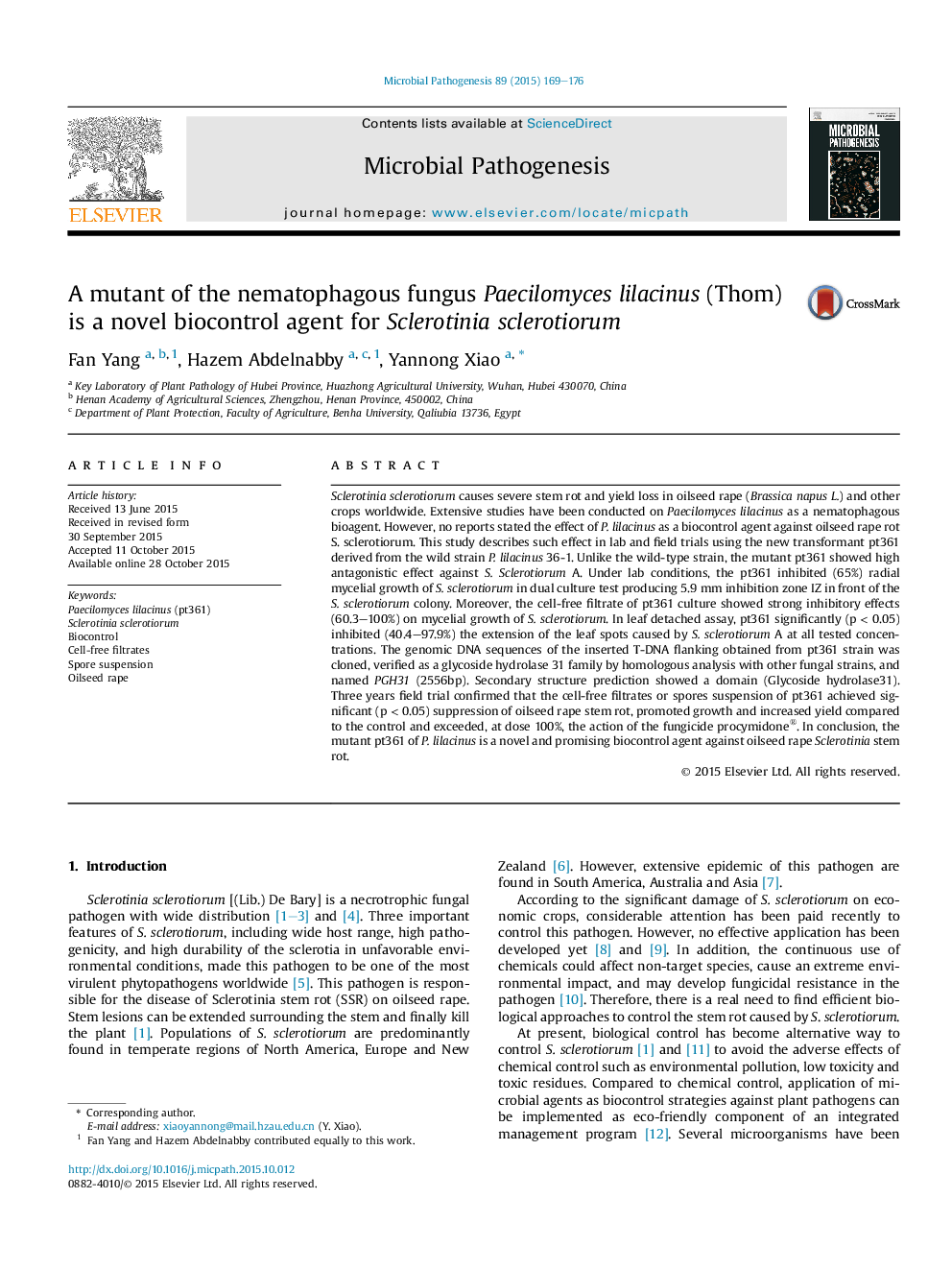| کد مقاله | کد نشریه | سال انتشار | مقاله انگلیسی | نسخه تمام متن |
|---|---|---|---|---|
| 3416457 | 1593700 | 2015 | 8 صفحه PDF | دانلود رایگان |

• First report of the mutant pt361 of Paecilomyces lilacinus as a bio-control agent against sclerotinia stem rot.
• The mutant pt361 inhibits Sclerotinia sclerotiorum infestation by its metabolites.
• Control of Sclerotinia sclerotiorum in field trials with pt361.
• pt361 application increased the yield of oilseed rape infested by S. sclerotiorum.
• In the field trials, pt361 achieved better control efficiency than the fungicide procymidone® against S. sclerotiorum.
Sclerotinia sclerotiorum causes severe stem rot and yield loss in oilseed rape (Brassica napus L.) and other crops worldwide. Extensive studies have been conducted on Paecilomyces lilacinus as a nematophagous bioagent. However, no reports stated the effect of P. lilacinus as a biocontrol agent against oilseed rape rot S. sclerotiorum. This study describes such effect in lab and field trials using the new transformant pt361 derived from the wild strain P. lilacinus 36-1. Unlike the wild-type strain, the mutant pt361 showed high antagonistic effect against S. Sclerotiorum A. Under lab conditions, the pt361 inhibited (65%) radial mycelial growth of S. sclerotiorum in dual culture test producing 5.9 mm inhibition zone IZ in front of the S. sclerotiorum colony. Moreover, the cell-free filtrate of pt361 culture showed strong inhibitory effects (60.3–100%) on mycelial growth of S. sclerotiorum. In leaf detached assay, pt361 significantly (p < 0.05) inhibited (40.4–97.9%) the extension of the leaf spots caused by S. sclerotiorum A at all tested concentrations. The genomic DNA sequences of the inserted T-DNA flanking obtained from pt361 strain was cloned, verified as a glycoside hydrolase 31 family by homologous analysis with other fungal strains, and named PGH31 (2556bp). Secondary structure prediction showed a domain (Glycoside hydrolase31). Three years field trial confirmed that the cell-free filtrates or spores suspension of pt361 achieved significant (p < 0.05) suppression of oilseed rape stem rot, promoted growth and increased yield compared to the control and exceeded, at dose 100%, the action of the fungicide procymidone®. In conclusion, the mutant pt361 of P. lilacinus is a novel and promising biocontrol agent against oilseed rape Sclerotinia stem rot.
Figure optionsDownload as PowerPoint slide
Journal: Microbial Pathogenesis - Volume 89, December 2015, Pages 169–176